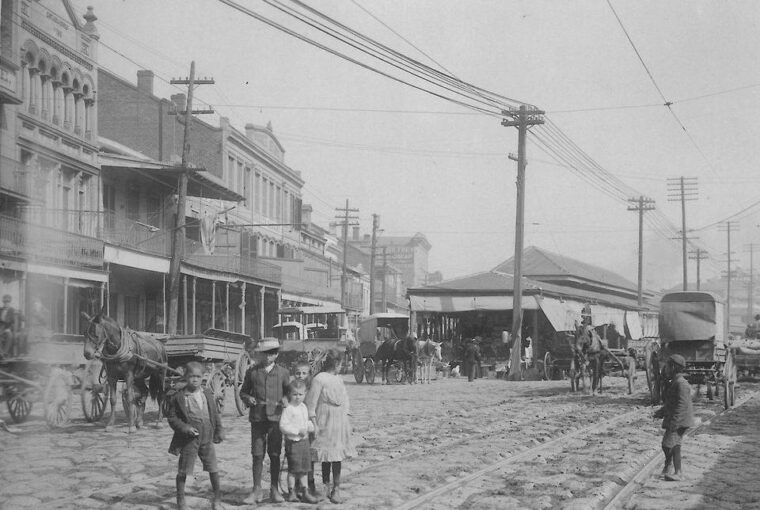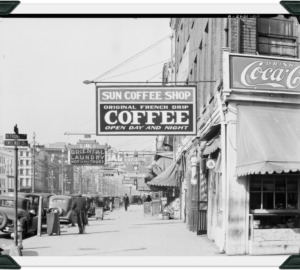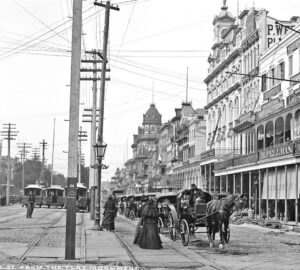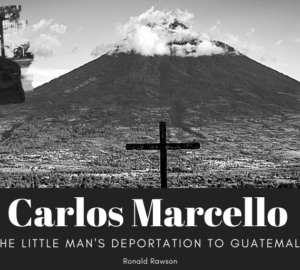When we last left New Orleans it was April 1st 1869 and New Orleans first Godfather, Raffaele Agnello, had been shot down on Toulouse Street in The French Quarter, or as it was called at the time, Little Palermo. His brother Joseph, known as Peppino, would take over his spot as ruler of the Italians of New Orleans but it would be short lived and Peppino was never quite as effective as his brother. Another faction, one that would eventually rule and produce the first true Godfather (as we think of that title today) would begin to rise as the dominant force in the city.
Raffaele’s faction was the Mafia from Palermo and throughout the Civil War he had used his influence and position as a member of The European Brigade (a military style unit that was used as a policing force during Union occupation) to build up his, and the Mafia’s, power. After the war had ended he continued his control and the gathering of power with control over the docks in New Orleans that loaded and unloaded fruits and vegetables from ships. During the early and mid years of Agnello’s rise there was quiet dissent among another faction known as the Messinesi, that hailed from Messina Sicily, and who were allied with some that hailed from Trapani, known as the Trapanesi. During this time a young, well to do fruit importer and shipping businessman named Joseph Macheca would begin an organization that was probably the biggest threat to Agnello’s power called the Innocenti. The quiet dissent would however turn into a hot war between the factions due to events in 1868 that involved these three groups and started with the murder of Liberto Barba who was the leader of the Messinesi.
During the events of 1868 and 1869 there were others who were quietly waiting in the wings. The Stuppagghieri hailed from Monreale which was a little town in the hills above Palermo. A twenty minute bus ride today will get you from the center of Palermo to the center of Monreale but in those days they were practically worlds apart. The Stuppagghieri were headed by Salvatore Matranga. Matranga kept his family clear of the events between the Palermitani and Messinesi. Matranga would continue to wait quietly in the shadows all the while building power during Joseph Agnello’s run at leadership.
Peppino took fairly swift revenge on those he held responsible for his brother’s murder. Though history doesn’t tell us who the assassin of Raffaele was (but most likely Gaetano Arditto) the man who would have been responsible for giving the order for the murder was Liberto Barba’s successor Joseph Banano. On the morning of Thursday July 22 1869 Peppino got his revenge. At 7:30 that morning Peppino, whether by chance or design is not known, met two unidentified men and pulled his pistol on them firing three shots. The men were most likely Joseph Banano and Pietro Allucho, a Banano ally. The men fled on foot and escaped the pistol fire but Peppino was confronted by a patrolman who at first attempted to arrest him. Peppino was able to talk his way out of the arrest however claiming that he was the one who had been shot at and an attempt on his life had been made. The patrolman let Peppino go free. Though exact details are sketchy it seems as if Peppino, along with ally Salvador Rosa, were able to catch their victims unaware just a little while later at 9 o’clock that morning near The French Market. Banano and Allucho were talking near a springing cart (a small two wheeled wagon used to haul vegetables and fruit) and whether or not Peppino and Rosa happened to be by the cart or were able to creep upon the two using the cart as cover isn’t known but at some point Rosa, using the cart as cover, fired on the two hitting Allucho first.
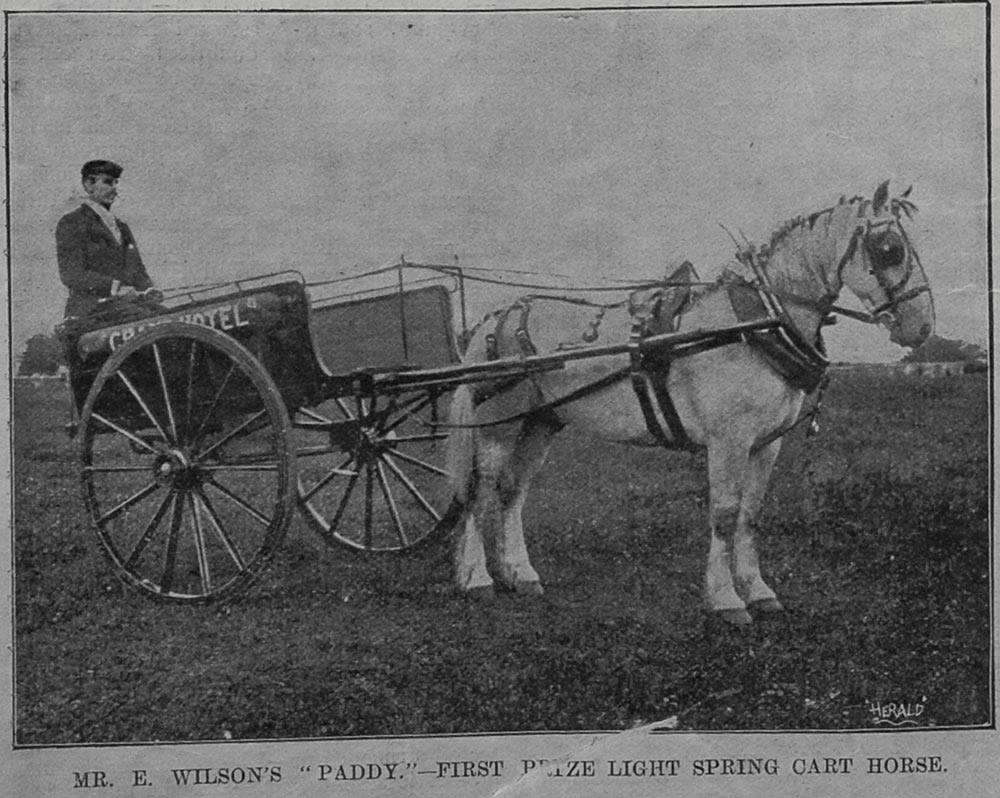
As Banano crouched down to help his friend, Rosa fired into his body as well, and Banano went down. Rosa had used a shotgun, most likely a lupara, and after discharging both barrels he tossed it into the cart from which he then pulled a pistol and fired another round into Banano. Banano also received five wounds from the lupara as well as a wound from a pistol in his pocket which had been shattered from the lupara blast driving one piece into his body for two inches. Allucho had been the recipient of six wounds from the lupara. After firing the pistol round into Banano, Rosa also tossed the pistol back into the cart which rapidly started to move off in the opposite direction led by an unidentified man but most likely Peppino. The guns, cart and unidentified man would disappear but Rosa wasn’t so lucky. The whole incident happened quickly, within seconds. At the sound of the first blast an officer identified only as Beasley and standing some distance away spotted Rosa standing by the cart, firing at the men. Beasley then started at a run towards Rosa. After the cart started to move off Rosa then noticed the officer running towards him and immediately turned to run himself but was quickly caught by Beasley. Rosa stated that he had only been defending himself and that the two dead men had been trying to murder him. Rosa was arrested none the less.
Despite the success of Peppino in taking revenge for his brothers murder things were going badly for him and his Mafia faction. Prior to the killing of Banano and Allucho there had been an attempt on his life in Lafayette Square. Though he escaped this there would be more attempts. In May of 1870 he was stabbed in the chest in a struggle on Louisa Street near the river. The wound was deep but he managed to recover. On September 13 1871 a rifle slug tore through his chest and left arm. Doctors didn’t think Peppino would pull through and family members prayed over him as he coughed up blood. But Peppino defied the doctors, or maybe the prayers were answered, and he once again recovered. His time left for this world was short though.
During this time span Salvatore Matranga had been building his organization. There are no details as to how the Stuppagghieri was organized prior to all these events but it seems after the killing of Raffaele, Matranga took a cue from Agnello’s Mafia and structured his organization in the same manner which would be used some sixty years later by Salvatore Maranzano when he set up the Five Families in New York. But Matranga used some foresight and didn’t exclude members from other factions. While Peppino was recovering from stab and rifle wounds Matranga was taking in members from the Messinesi, Trapanesi and, eventually the Palermitani who, when faced with the waning power of the Agnello’s and the rising power of Matranga decided to go with the flow. Two of the earliest recruits into the New Orleans faction of the Stuppagghieri (it was also still running strong in Monreale under an old friend of Matranga’s named Salvatore Marino and there may have been co-operation between the two over the long distance) were Matranga’s sons Antonio and Charles. Barely teenagers at the time Antonio had already been a suspect in the murder of a man named Erastes Wells who was a Commissary of the Poydras Market. Eventually blame was focused on Salvador Rosa for the murder of Wells but Rosa was found not guilty. Charles would eventually become the first recognized modern Godfather. In addition to all this it seems Joseph Macheca threw his lot in with The Stuppagghieri by financing the group in it’s endeavors.
Mafia myth tells us that the initiation ceremony into the Mafia came about in a couple of different ways but the most popular tells us it started with the formation of The Five Families in the 1930’s. It seems however that the Stuppagghieri actually were the first to use a ceremony to induct new members though it was a much more dramatic ceremony veiled in mystery. To the Italians so inclined to such a life The Stuppaggheiri were seen as a welcome change from the rule of the Agnello’s and Matrnga’s organization would induct many new members. Membership was by invitation only and refusal of the invitation would bring the harshest of reprisals. Inductees were taken at short notice and without explanation to an undisclosed location and brought into a dimly lit room where current members were already waiting dressed in black hooded cloaks. On a table were a candle, a dagger, a pistol and scraps of paper on which were drawn a skull above a cross made from a dagger and pistol. A member carrying a human skull would approach each inductee and instruct them to look into the face of death and swear an oath of loyalty to The Stuppagghieri at which point the dagger would then be taken from the table and blood drawn from the finger of the inductee. They would then be told that their blood now belonged to The Stuppagghieri and could be claimed at any time. The induction would be finished with one of the scraps of paper containing the images of the skull and cross being crumpled up, placed into the hands of the inductee and set on fire with the candle. After it had turned to ash the inductee would be taken to a place among the onlooking members to assume their place in the organization. After the ceremony was completed the lights would be turned up in the room to reveal tables loaded down with food and drink and it would be time to party!
During the time span of April 1869 when Raffaele was gunned down and April of 1872, as previously mentioned, things weren’t going all that well for Peppino. His ally Salvador Rosa who had been arrested after shooting down Allucho and Banano had died not too long after being thrown into the Orleans Parish Prison of a mysterious illness. Some suspected he was poisoned. Another ally, Salvatore Honorata, was gunned down about a year later near The French Market. It’s possible, and probable, that Peppino tired of surviving attempts on himself, tired of seeing his people jump ship to The Stuppagghieri and tired of seeing his friends and allies die. So by April 1872 it seems Peppino was ready for a cease fire. He set up a meet with Banano successor Joseph Maressa ( also known as Vincent Orsica) on April 19 1872 near The French Market.
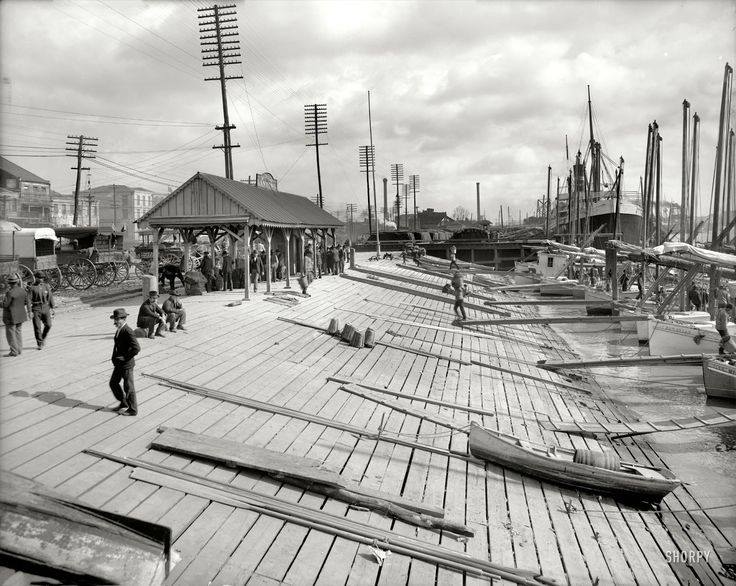
The meeting apparently went badly and the two were seen arguing and separating from each other angrily. Early on the morning of the next day witnesses reported seeing the two wrestling each other on the Picayune Pier, also known as Luggar’s Landing. Peppino shook Maressa off and ran towards a schooner named The Mischief. As he retreated three gunmen appeared at Maressa’s side and fired shotguns at Peppino. When Agnello reached the schooner he drew a pistol and returned fire towards his attackers. Caught in the crossfire were a man named Joseph Simon Soude, a newly wed, who was fatally wounded and a boy named Edward Nixon who suffered a superficial wound.
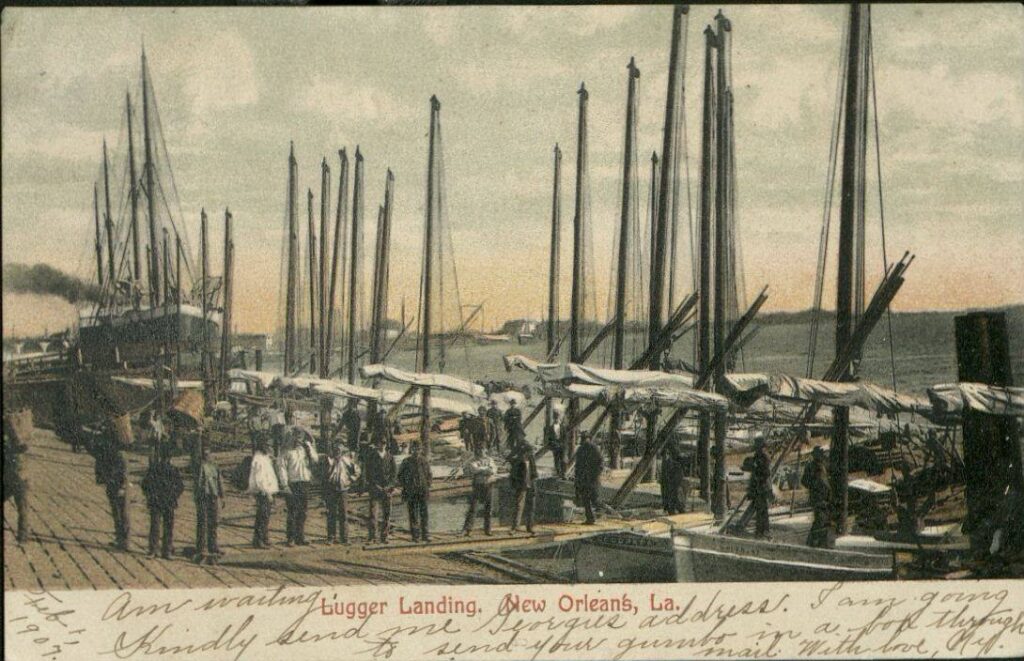
Maressa, drawing a large pistol, had managed to run up on Peppino and fire an almost point blank round into his chest. Agnello fell with a wound through his heart and a gaping hole in his back. Amazingly he rose and took two steps towards Maressa but then fell again for the last time. Having survived several previous attempts he at last met with a fatal effort. Police arrived before any of the four gunmen escaped and placed them under arrest. Among the shooters was Gaetano Arditto, the suspect in Raffaele’s murder three years prior. History hasn’t yet told us what happened with the shooters except for Arditto who would be implicated eight years later in the Murder of Antonio Labousse (see an Oysterman Gets Shucked in The Crescent Corner).
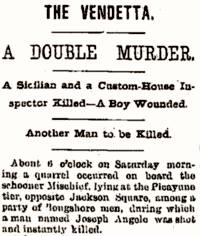
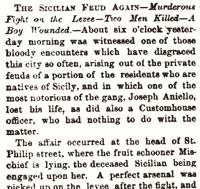
The few remaining allies of the Agnello’s would soon either accept the authority of The Stuppagghieri or scatter. Among those that scattered were Frank Sacarro who was Godson and body guard to Raffaele and was present, and wounded, in the assassination of Raffaele. Sacarro took his family to Texas were they resettled in Dallas. Alphonse Mateo, who was the most likely killer of Liberto Barba and had his nose blown away shortly after by Joseph Banano, disappeared from New Orleans to parts unknown with his family.
After the final fall of the Agnello brothers Little Palermo’s merchants, if they were smart, sought arraignments with Matranga’s Stuppagghieri. Those that didn’t were threatened, found their homes and businesses robbed and ransacked, business contracts suddenly and without explanation cancelled and in some cases had family members kidnapped. The stubborn holdouts would see their homes or businesses set on fire and the really stubborn ones would often be fished out of a canal or the Mississippi River.
All would seem quiet for the next few years under the rule of the new organization of Salvatore Matranga and The Stuppagghieri until the arrival of Giuseppe Esposito in 1879.
- What’s This Silver Dollar Shit! That’s Sam Carollo! - June 26, 2023
- New Orleans Sets a Record - April 11, 2022
- Carlos Marcello Takes A Vacation: The Little Man’s Deportation to Guatemala Pt. 2 - June 11, 2021





